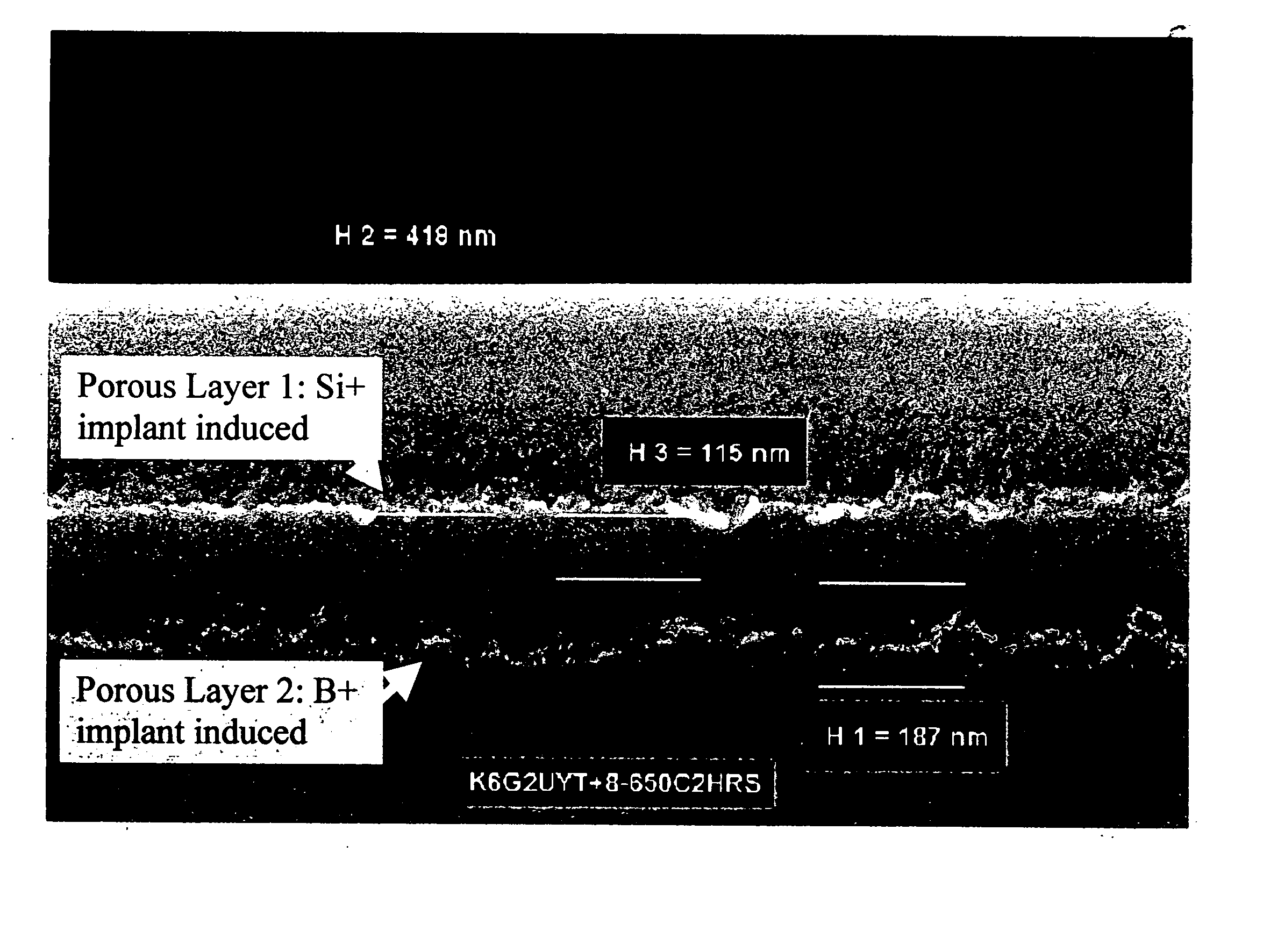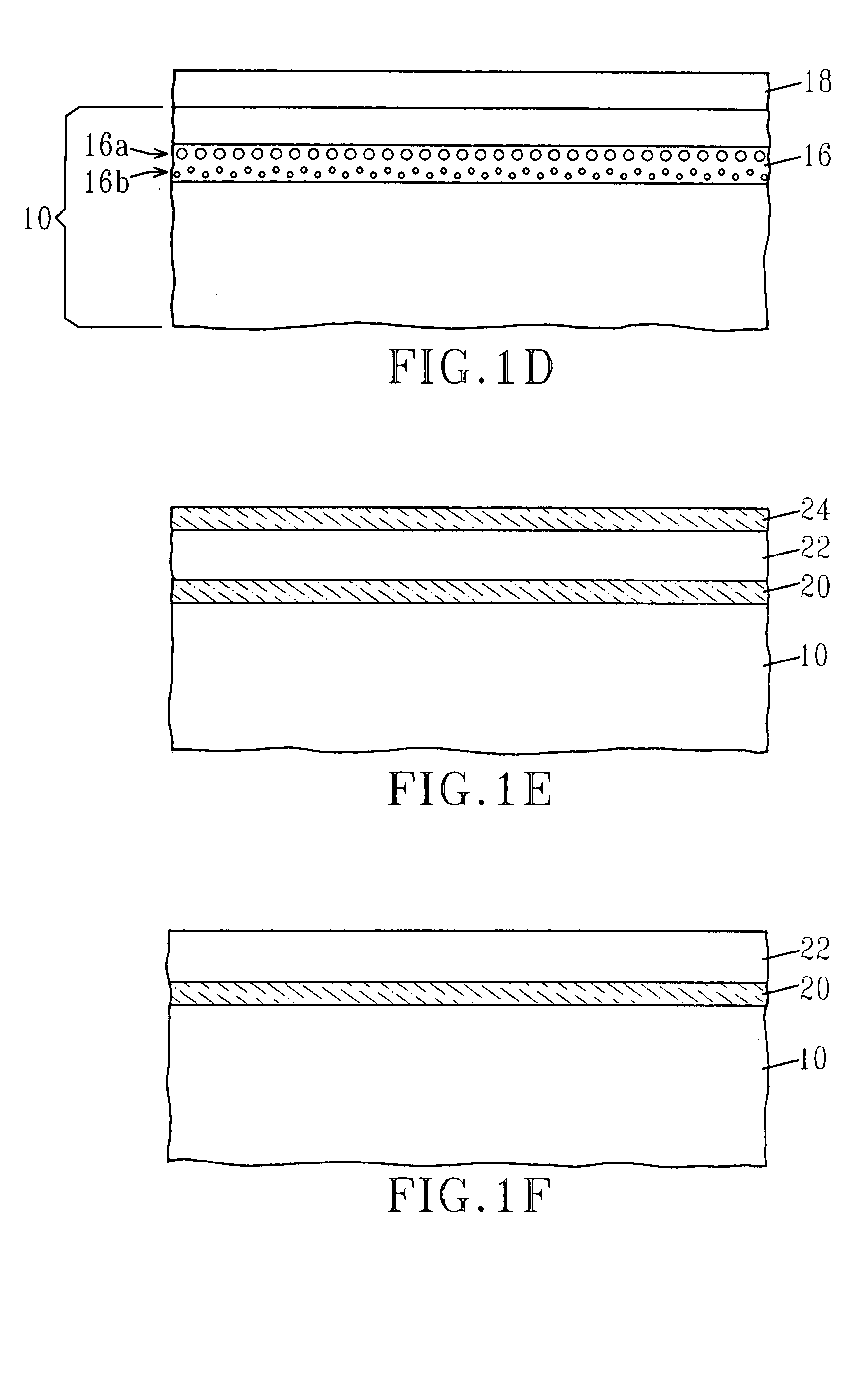SOI by oxidation of porous silicon
a technology of porous silicon and substrate structure, applied in the direction of semiconductor devices, vacuum evaporation coatings, coatings, etc., can solve the problems of difficult to form soi structures, inability to meet the requirements of the substrate, so as to achieve the effect of simple and cost-effective
- Summary
- Abstract
- Description
- Claims
- Application Information
AI Technical Summary
Benefits of technology
Problems solved by technology
Method used
Image
Examples
Embodiment Construction
[0034] The present invention, which provides a simple and low-cost method for forming an SOI substrate structure having a uniform buried oxide layer underneath a Si-containing over-layer, will now be described in greater detail by referring to the drawings that accompany the present application. In the accompanying drawings, like and / or corresponding elements are referred to by like reference numerals.
[0035] Reference is first made to the initial structure shown in FIG. 1A which includes a Si-containing substrate 10 having a dopant region 12 formed therein. The term “Si-containing substrate” as used herein denotes a semiconductor material that includes at least silicon. Illustrative examples of such Si-containing substrates include, but are not limited to: Si, SiGe, SiC, SiGeC, epi-Si / Si, epi-Si / SiC, epi-Si / SiGe, and preformed silicon-on-insulators (SOIs) or SiGe-on-insulators (SGOIs) which may include any number of buried insulating (i.e., continuous, non-continuous or a combinati...
PUM
| Property | Measurement | Unit |
|---|---|---|
| energy | aaaaa | aaaaa |
| energy | aaaaa | aaaaa |
| temperature | aaaaa | aaaaa |
Abstract
Description
Claims
Application Information
 Login to View More
Login to View More - R&D
- Intellectual Property
- Life Sciences
- Materials
- Tech Scout
- Unparalleled Data Quality
- Higher Quality Content
- 60% Fewer Hallucinations
Browse by: Latest US Patents, China's latest patents, Technical Efficacy Thesaurus, Application Domain, Technology Topic, Popular Technical Reports.
© 2025 PatSnap. All rights reserved.Legal|Privacy policy|Modern Slavery Act Transparency Statement|Sitemap|About US| Contact US: help@patsnap.com



